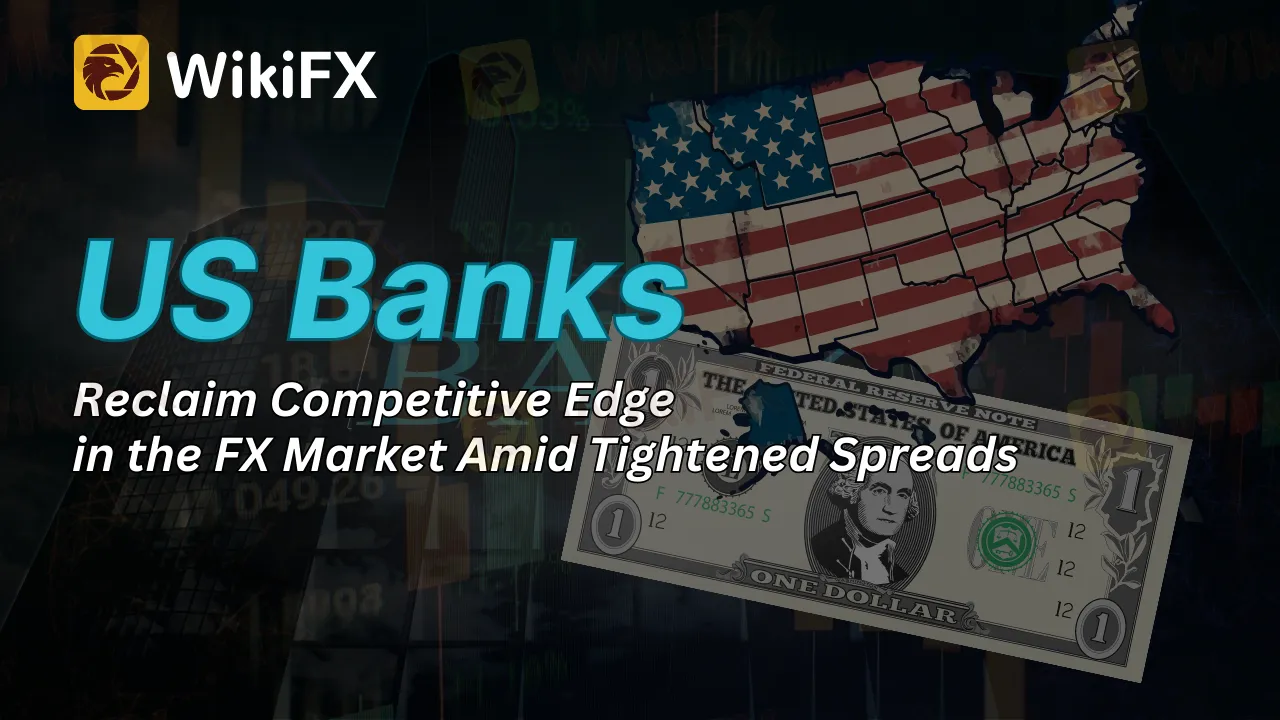简体中文
繁體中文
English
Pусский
日本語
ภาษาไทย
Tiếng Việt
Bahasa Indonesia
Español
हिन्दी
Filippiiniläinen
Français
Deutsch
Português
Türkçe
한국어
العربية
US Banks Reclaim Competitive Edge in the FX Market Amid Tightened Spreads
Abstract:Discover how US Banks are reshaping the FX market, narrowing spreads, and reclaiming their competitive edge amid SA-CCR implementation challenges.

In the dynamic and competitive world of foreign exchange (FX) swaps and forwards, US banks have been significantly reshaping the landscape over the past year. The catalyst for this transformation has been the strict implementation of the standardized approach to counterparty credit risk (SA-CCR), which has presented both challenges and opportunities for the sector.
Under the SA-CCR, US banks were compelled to charge wider spreads than their European and Canadian counterparts to account for the increased risk-weighted assets produced by their positions. At one point in March last year, the gap in spreads quoted for G10 FX swaps between US and European banks was a substantial 20 basis points, as indicated by data compiled by BestX, a renowned third-party transaction cost analysis provider.
This led to a decline in market share for several US banks, with industry giants such as Citi and JP Morgan experiencing a noticeable impact. The wider spreads placed these banks in a tough position in an already competitive environment, forcing them to innovate and devise strategies to cope with the heightened capital costs.
However, the landscape has changed noticeably this year. US banks have made strategic adjustments, effectively narrowing their swaps pricing. According to buy-side participants, while European banks' spreads remained static, US banks achieved a tighter pricing structure. Evidence provided by BestX corroborates this shift, revealing that the spread differential has significantly reduced to just 5bp.
The tightened spreads have yielded positive results for US banks, particularly in market share. Heavyweights like Bank of America, Goldman Sachs, Morgan Stanley, and Wells Fargo have seen a rise in the size of their FX forwards book during the first quarter of 2023, based on data from Counterparty Radar.

So, how did the US banks manage to normalize their prices in such a competitive environment?
One strategy has been to incentivize asset managers to collateralize their trades. While the SA-CCR penalizes non-cleared trades, collateralizing them provides a mitigating effect. Though there's no regulatory obligation for buy-side firms to post collateral on FX swaps and forwards, US banks have leveraged competitive pricing to encourage asset managers to sign credit support annexes.
Furthermore, US banks have shown marked improvement in managing trading costs. Dealers' interest in certain types of business has evolved, and they have adapted their spreads accordingly. Prior to this, such adaptation was not feasible due to the lack of granular, up-to-date data on risk-weight costs at banks. This new approach has allowed internal bank trading desks to access increased budgets, offering more competitive FX swaps pricing.
In addition, US banks have begun utilizing optimization vendors such as Osttra and Capitolis more efficiently. The latter recently completed an optimization run with a record 20 firms, successfully reducing $341 billion in notional used for the SA-CCR calculation.
While it is suspected that US banks have developed other means to offset capital costs, these measures may exist in areas of the trade lifecycle that are not typically analyzed in buy-side transaction cost reports. As a result, while not all US banks are affected equally, each has been dealing with the SA-CCR in its own unique way. This underscores the resilience and adaptability of US banks and suggests that the temporary upper hand enjoyed by EU and Canadian banks could indeed be short-lived.
Stay up-to-date with the latest developments in the world of FX trading by installing the WikiFX App on your smartphone. Download the App here: https://www.wikifx.com/en/download.html

Disclaimer:
The views in this article only represent the author's personal views, and do not constitute investment advice on this platform. This platform does not guarantee the accuracy, completeness and timeliness of the information in the article, and will not be liable for any loss caused by the use of or reliance on the information in the article.
Related broker
Read more

WikiFX "3·15 Forex Rights Protection Day" – Official Release of the Blacklist
WikiFX, as a globally leading forex investment ecosystem service platform, has always been committed to providing fair and authoritative broker verification services for forex investors, while offering solid rights protection support for every victim of forex investment. On February 26, 2025, WikiFX once again launched its annual "3·15 Forex Rights Protection Day" event, aiming to empower forex investors to speak out and defend their rights through open, transparent, and robust means.

Nigeria’s Oil and Gas Sector Gains Momentum
Nigeria’s oil and gas industry is experiencing a surge in investment, fueled by policy reforms and international collaboration, paving the way for continued energy expansion.

The Global Tariff War Escalates: Who Suffers the Most?
The global trade war is intensifying as countries continue to raise tariffs, aiming to protect their own economies while creating greater market uncertainty. In this tit-for-tat game, who is truly bearing the brunt?

Immediate Edge Review 2025: Is it safe?
Launched in 2019, Immediate Edge claims to be an automated cryptocurrency trading platform using AI technology for crypto trading services. The platform requires a minimum deposit of $250 to begin trading, which is relatively expensive for many investors. During its short operation, Immediate Edge failed to establish a positive reputation. The platform has undergone frequent domain changes and has repositioned itself as an intermediary connecting users with investment firms—a move that appears designed to obscure its actual operations. Immediate Edge restricts services to investors from the United States; it remains accessible to users in other regions.
WikiFX Broker
Latest News
FINRA Panel Orders Stifel to Pay $132.5M for Misleading Investors
The Future of Trading is Here: How AI is Reshaping the Market Landscape
Nigeria’s Oil and Gas Sector Gains Momentum
How to Avoid Risks from Scam Brokers in Forex Investment
Gold Price Hits Record High Amid Economic Uncertainty and Policy Shifts
Could DeepSeek Be Linked to a $390 Million Fraudulent U.S. Server Deal?
Ripple Secures Dubai License: First Blockchain Payments Provider in DIFC
BSP Restricting Offshore Forex Trades to Control Peso Volatility
Retiree Loses RM2.33 Million in Investment Scam – Could You Be Next?
Will Trump's Trade Policies Fuel Inflation? BlackRock Warns of Economic Risks
Currency Calculator






